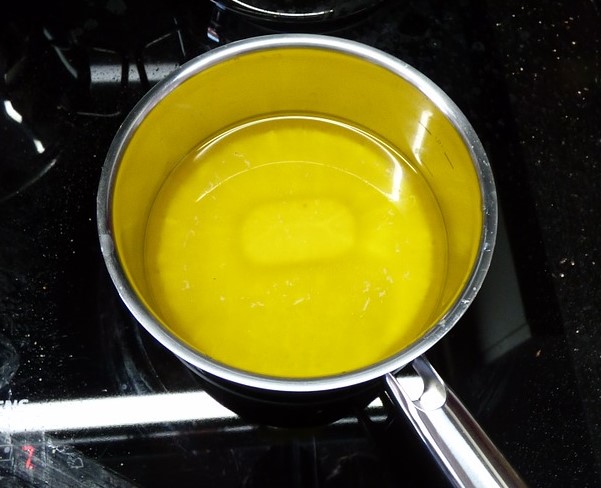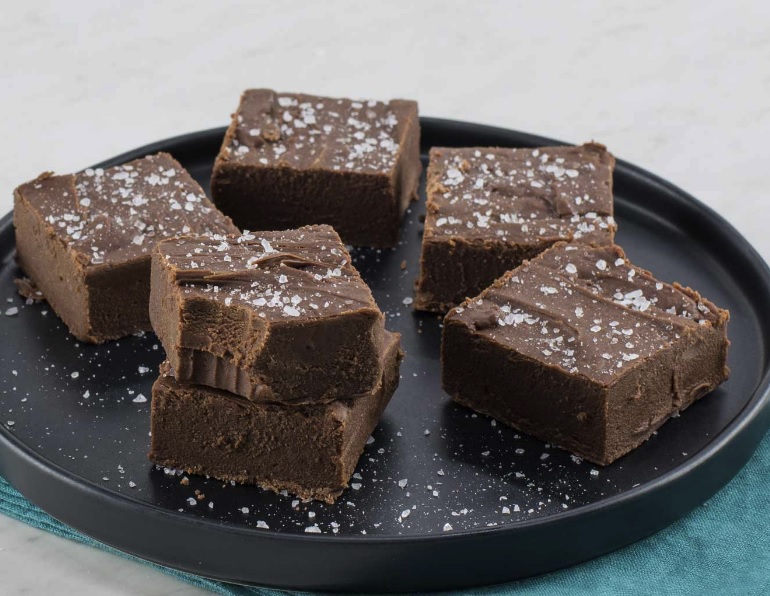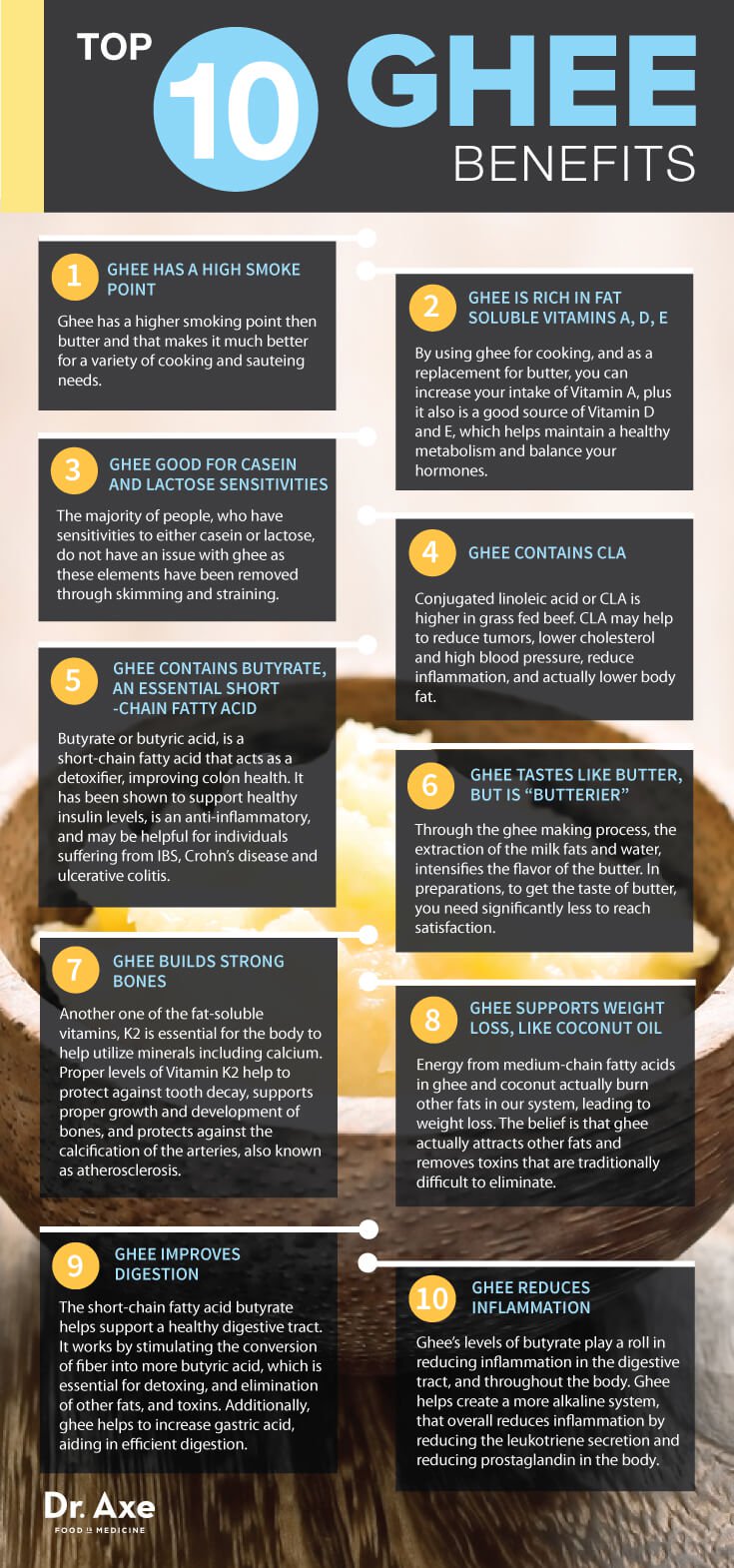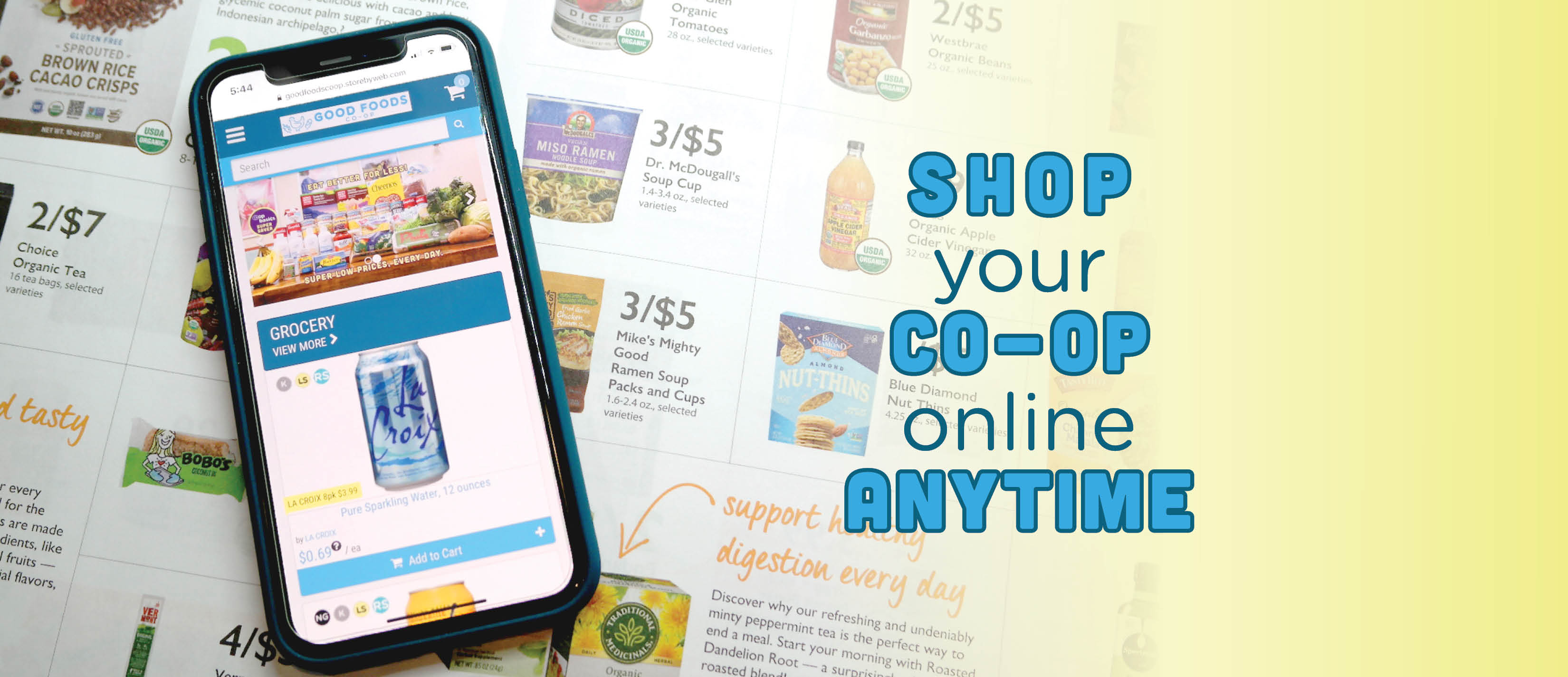You may have heard of ghee or seen it on the shelf near the cooking oils at Good Foods. So, what is it and what can you use it for? I’m so glad you asked!

Ghee is basically clarified butter that’s cooked longer for a deeper flavor. There are no milk solids in ghee, so it’s generally accepted as a great addition to any paleo, keto or Whole30 diet. During the simmering process, all the lactose and water is filtered off, meaning ghee is lactose-free, casein-free and shelf-stable. In the process of simmering, some of ghee’s milk solids caramelize, leaving behind hints of sweetness and roasted nuts.
Ghee may be new to some of us, but it’s actually an ancient ingredient. The Indian subcontinent is the birthplace of ghee. People there have been cooking with ghee for thousands of years. It even has roots in Ayurvedic practices, which originated over 3,000 years ago and are still in use today. So for the most authentic Indian cooking, ghee is a great ingredient to have on hand.
Use it just like you would use any oil or butter in any dish. It works great for sauteing, roasting or baking. The ghee smoke point is a whopping 85-135°F higher than almost all other oils, like canola oil and coconut oil. That means it’s more versatile, less splattery and—thankfully—more forgiving. Still not sure how to use it? This fun little video by Organic Valley should clear it up.
Because it’s pure fat with no sugars or proteins, there’s no need to refrigerate ghee. It’s shelf-stable so you can just keep it in your pantry, right next to your other oils. One of the primary differences between ghee and other oils, though, is that ghee is made from butter and is not vegan. If you’re following a vegan diet, it’s best to stick to coconut oil, EVOO or other healthy dairy-free fats.

Start replacing ghee in your recipes where you’d use butter or cooking oils and enjoy the depth of flavor it adds. Try this easy hollandaise sauce using ghee or how about 4-ingredient ghee fudge?! (pictured left). I can personally vouch for ghee as a delicious addition to stovetop popcorn, too.
If you’re into DIY, you can give at-home ghee a go with this recipe from the Dr. Axe website (they have tons of great ghee recipes there, too). It’s a simple way to control the quality (based on which butter you use) and boost the nutrients even more than commercially-produce ghee.
HOMEMADE GHEE
from DrAxe.com

INGREDIENTS:
- 1 pound of grass-fed unsalted butter
- Deep, wide-bottomed skilled
- Wooden spoon or heat-resistant spatula
- Cheesecloth
- Mesh skimmer
- Mesh strainer
- Glass jar
DIRECTIONS:
- Place one pound of butter into a deep skillet over medium-low heat and watch it melt slowly. Note that it may spatter a bit as the butter begins to bubble. Stir with a long-handled spoon and maintain a simmer.
- Continue to simmer, stirring occasionally, for 20–30 minutes until the milk proteins have separated from the gold liquid. There will be white foam on the top and some bits of milk fats on the bottom of the pan. Gently skim the foam off with the mesh skimmer and discard. You may have another “foam up” stage, and this is good. Skim and discard once again. Now, the milk fats on the bottom of the pan will continue to brown. Again, this is a good thing — this is where the distinctive nutty flavor comes from.
- Allow it to simmer until it becomes golden brown but not burnt. Keep a watchful eye because at this stage the ghee can quickly burn. Remove from heat and allow to cool to room temperature. Place several layers of cheesecloth in the mesh strainer (or use nut milk bags) and slowly pour the butter into the jar. The result? A beautiful golden clarified butter that is liquid gold.
- While it will firm up a bit at room temperature, keep in the refrigerator if you desire a spreadable ghee. Ghee will remain fresh at room temperature for several weeks when sealed properly and can last months in the refrigerator. Because fats tend to absorb other flavors, it’s essential that ghee is kept properly sealed, whether in the refrigerator or on the counter.
BONUS: If you’d rather buy some ready-to-use ghee, Organic Valley has a $2 off coupon you can print out and bring to the Co-op next time you’re in. Cool, right!? Just click on this link to get yours.
